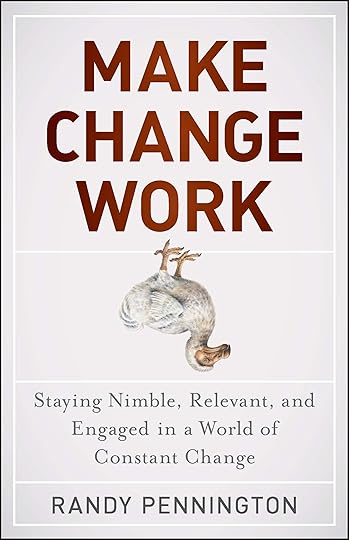Guest Blog: DODOS AND COYOTES: Only the Nimble Survive
This week on our Friends on Friday guest blog post, my friend and colleague Randy Pennington asks us to look at how our service is viewed by the customer, as a dodo bird or as a coyote? He makes a great point that in order to survive we must model our customer service after the coyote. Also check out his new book: Make Change Work.
Your company’s long-term ability to attract and retain customers will come down to a simple question: When your customers think of your service, are you viewed as a dodo bird or a coyote?
In Defense of the Dodo
The dodo bird has become the iconic symbol for failure to adapt to a changing environment. The term dodo is often identified with a lack of common sense and being perpetually confused.
You could say that the dodo became complacent and comfortable. Dodos, however, were not stupid. They never had a chance. They evolved in an environment with no natural predators and no need to adapt. The dodo was perfectly built to live in a world that never changed. Extinction is the result when you are born without the ability to understand the concepts of danger, urgency, and complacency.
That’s not the case with humans, and yet there are people and organizations of all shapes, sizes, and types that see and deliver customer service through the eyes of the dodo bird.
They see their environment as stable and secure with no need to worry that competitors are stealing their customers by finding ways to deliver amazing service.
They have become complacent and lost their ability to stretch out of their comfort zone to find new ways to delight and amaze their customers.
They have lost or never developed the ability to adapt quickly to changing customer expectations.
They are unaware of how their competitors are changing customer service expectations through innovation and commitment.
They have never committed to continued growth and development and, as a result, they are perfectly structured to provide service in a way that the customer no longer values.
Dodos didn’t know any better. You do, and you can keep your service from being viewed as a dodo with intentional effort.
In Praise of the Coyote
The Road Runner cartoons featured Wile E. Coyote as the bumbling nemesis trying to capture the endlessly out of reach object of its desire.
The truth is far different.
The coyote is an ideal model for flourishing in a world where you must compete to survive because they are:
Adaptable: Coyotes originally inhabited open prairies and deserts in the southwestern part of North America. Today, they are found from Alaska to Central America and flourish in forests, mountains, and urban areas. Unlike most species, coyotes thrive in areas where humans live—often without anyone even knowing that they are there.
Opportunistic problem solvers : Coyotes learned that survival meant doing different things as well as doing things differently. They prefer meat, but they will eat basically anything: mammals, insects, fish, snakes, fruit, food discarded by humans, and plants. Coyotes see an opportunity and act on it.
Aware of their surroundings: Coyotes can detect food and danger up to a mile away. In other words, it is hard to surprise a coyote. They know you are coming before you know that they are around.
Speedy: Coyotes can run at a respectable 40 mph. That is not puma-like speed, but it is fast enough for them to avoid predators and catch their prey.
Territorial when needed: Like their cousins the dog, coyotes mark and defend their territory. What is theirs is theirs, and you will have to fight them to take it.
Secretive when it serves them: Coyotes have developed the ability to hide in plain sight, and they will even walk on their toes to keep their prey from hearing them.
Committed to family: Coyotes strong sense of family increases their opportunities to protect and grow the species. Male coyotes are active participants in caring for newborn pups, which means more of them survive.
Versatile when working to succeed: Coyotes usually work alone or in small packs. But they will work in larger teams when it serves their purpose. Coyotes will even team up with badgers—a natural enemy—to track and kill a common prey. There is no illusion of friendship. The coyotes and badgers enter into this partnership of convenience because it conserves energy and increases their mutual effectiveness.
Today’s amazing service is tomorrow’s basic expectation as your competitors continually adapt. The future belongs to those who approach customer service through the eyes of the coyote. The dodos will become extinct.
Which one are you?
Randy Pennington is author of Make Change Work: Staying Nimble, Relevant, and Engaged in a World of Constant Change (Wiley, 2013) from which this article is adapted. For additional information or to schedule Randy for your organization: contact via telephone at 972.980.9857; e-mail at Mary@penningtongroup.com or on the Internet at www.penningtongroup.com.
©2013 by Pennington Performance Group; Addison, TX. Used with permision. This article may be downloaded for personal and professional development. Copies may be shared within an individual organization. All other uses of this material are strictly prohibited without written permission from the author.
The post Guest Blog: DODOS AND COYOTES: Only the Nimble Survive appeared first on Shep Hyken.



